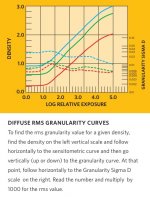mcnaldo
Newbie
My wife and I foster children up to 8 yrs old and I am keen to get a pictorial record of their time with us as the children will need memories in 30+ yrs time so I use film. I have tried several sustainable 'memory capture' options - DSLR, SLR and compact. I need quiet, small and unobtrusive, so after several attempts I have recently acquired a CLE which is fantastic (I have tried a few others since my debut Ricoh KR5 in 1981 - M6 TTL, HX RF, Nik 28/35Ti F100/D200/F5,...). I also have a CL I didn't think I'd like but do. No lenses over 50 as I'm close already.
For the life of me I can't figure out how to get the best from the manual settings on the CLE for this type of spontaneous recording. I can do "at the beach/zoo/party/nursery" ok but the real stuff is day to day at home in the living room catching a glance or expression which will be recognisable to the future adult. My reliance on auto settings is frustrating - I really want to use it creatively as my own interest and skills develop. I'm sorry if this is a well-worn thread but any advice on use or technique would be most welcome. I love the CLE but I have a growing sense I'm missing something.
Thanks
For the life of me I can't figure out how to get the best from the manual settings on the CLE for this type of spontaneous recording. I can do "at the beach/zoo/party/nursery" ok but the real stuff is day to day at home in the living room catching a glance or expression which will be recognisable to the future adult. My reliance on auto settings is frustrating - I really want to use it creatively as my own interest and skills develop. I'm sorry if this is a well-worn thread but any advice on use or technique would be most welcome. I love the CLE but I have a growing sense I'm missing something.
Thanks





